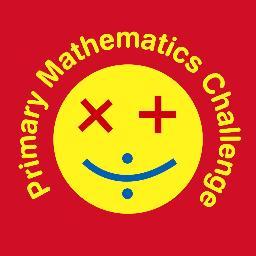
How To Teach Multiplication
How to teach multiplication is something that a lot of people wonder about. There are many different ways to go about teaching this subject, and it’s important that you find the best way for you and your child.
Visual learning aids
When it comes to teaching multiplication, you will want to use visual learning aids. Using visuals can help you avoid the frustration that many teachers have with teaching this tricky concept.
One of the first strategies you should try when teaching multiplication is to show how to form equal groups. You can do this by using arrays. These can be displayed as images or numbers on paper, and are also good for teaching even and odd numbers.
How to Teach Multiplication the Right Way
Another great idea for visual learning aids is a multiplication chart. You can find these online for less than $10. The chart will let you see how to multiply a number with the addition and subtraction operations.
Visuals can also be used to help you teach the distributive property. The distributive property is when a multiplies two numbers without changing the value of the product.
Concrete manipulatives
Using concrete manipulatives is an excellent way to help your students understand multiplication and place value concepts. These materials will allow your students to visualize the problem and use strategies to solve it.
When you are ready to start using concrete manipulatives, your first step is to identify the specific problems you are trying to solve. For example, if you are teaching a child to subtract, you can begin with subtraction by removing objects from a group. Once your child is comfortable with this concept, he can move on to calculations that require exchanging objects.
The goal is to make sure that the subtraction does not exceed the number that was originally asked. If you are asking a student to add, then count the items. This will allow you to put them in equal groups.
How To Teach Multiplication – Skip counting
When teaching multiplication facts, it’s important to have a solid understanding of skip counting. This strategy is useful for both computation and pattern recognition, and can help children learn to solve multiplicative situations.
Skip counting can be used to solve simple multiplication problems, like putting 15 cupcakes into boxes of 3. It can also help students recognize numerical patterns. A child could draw two apples in three rows, or count the number of groups in a set. The more patterns in a set, the more generalizations can be made about the numbers in it.
Children can use a number line to visualize how many groups there are, or they can count out equal sets of manipulatives. Students can create their own number lines, or use sentence strips to make a number line chart.
Making groups of items
Making groups of items to teach multiplication can be a fun way to introduce students to this concept. It helps build confidence in the process. If done right, the end result can be a wonderful learning experience. Several strategies can be used to do this.
For example, using arrays to teach multiplication is a great way to make a visual connection between the concept and its applications. Students can use arrays to make sense of the multiplier, and learn the rules of multiplication while doing so.
Another strategy is using anchor charts and other visual representations to help students learn the basics of multiplication. These can be created using paper or other materials. You can also create a multiplication board with a thrift store checkerboard or other similar device.
Building procedural fluency
Procedural fluency in mathematics refers to a student’s ability to perform calculations accurately and efficiently. This proficiency is essential for understanding and applying the meanings of rational numbers and place value. It is also necessary for effective problem solving and analysis of calculation methods.
Procedural fluency develops from the beginning stages of conceptual understanding. The development of procedural fluency depends on several skills, including strategic competence and flexibility.
To develop procedural fluency, students must learn and apply standard algorithms, or procedures, in order to solve problems. They can then explain the methods they use.
Students should also have the option to choose the most efficient method to use when performing a computation. For example, the standard algorithm for multi-digit multiplication is the most accurate. However, there is no one-size-fits-all answer to every computation.

How to Teach Multiplication Facts
If you are wondering how to teach multiplication facts, you are not alone. It can be a challenging task for teachers to teach children the skills they need to succeed in school. To make the process easier, you can use a variety of methods, including timed tests, drills, and manipulatives. Using these techniques will help you and your students learn the concepts in an effective and fun way.
Teaching as a system of patterns – How to Teach Multiplication to Struggling Students
Teaching multiplication facts as a system of patterns is an effective way to boost student recall and understanding. However, the order in which you teach these concepts is very important.
If you don’t follow the proper sequence, students could miss out on learning important math skills and fail to reach their potential. You can avoid this by using the right strategies and tools. Here are a few of them:
First, you need to get the basics of the multiplication table in order. Once you’ve got that covered, you can introduce new facts one at a time. It’s best to start with a single-digit number and then work your way up to multiple-digits.
Next, you’ll want to make sure you have an adequate amount of time set aside for practice. This is especially helpful if your student is struggling with multiplication facts.
Using stepping stones
When it comes to teaching multiplication facts, it’s essential to make the process interesting and fun. This can be achieved by using a combination of different techniques.
For example, children need to break up facts into manageable chunks. They also need to practice in order to memorize the information. By using games and activities, students can boost their confidence when they are able to recall facts.
If children have mastered multiplication facts, they will have more confidence to tackle more complex problems. However, it is important to remember that it may take some time for a child to memorize all of the facts. Therefore, parents should adjust expectations based on their child’s level.
Parents can help their child learn multiplication facts by making the process engaging. Using stepping stones is a great way to do this.
Using manipulatives
If you’re looking for ways to help your child with multiplication facts, there are many methods you can use. Some of the best are arrays, drawings, and skip counting. These techniques will help your child to grasp the concept of multiplication and how to solve problems.
Arrays are great for teaching multiplication because they give students visual representations of the math. An example is a rectangular array of two blocks by six blocks. They also show how the length of the array is based on the factors of the problem.
Drawings and arrays can also be used to teach the commutative property of multiplication. For example, if you draw an array of three rows of four pieces, you’ll end up with the number eight.
Timed tests and drills – How to Teach Multiplication Facts
Timed tests and drills to teach multiplication facts may have once been the norm, but these days there are many other ways to help children memorize facts. While the timed test is a great way to assess a student’s knowledge of multiplication, it can also cause anxiety. It is therefore important to design well-designed tests to smooth out any bumps along the way.
There are numerous ways to help your child remember math facts, but some methods work better than others. Some of the most important are multiplication stories, which activate language centers in the brain. Other techniques use visual flashcards, where students draw pictures of multiplication facts.
The Multiplication Mega Pack contains a variety of different approaches to teaching multiplication. They also include a number of visual aides and interesting tools to help build fluency with multiplication.
Building procedural fluency
Procedural fluency is a skill that students can develop through meaningful independent practice. Teachers can help children build this skill through activities that are fun and engaging.
Students must understand the concepts behind the procedures they use to solve math problems. If they don’t have this skill, they will have trouble using maths efficiently and accurately.
The Common Core State Standards emphasize procedural fluency in addition to conceptual knowledge. This helps children to retain their skills as they learn new concepts. It also provides the motivation they need to continue learning.
There are many ways to teach children mathematics. Some of the best include games and activities that can increase their number sense and flexibility. These activities are easy to prepare and repeat throughout the year.
